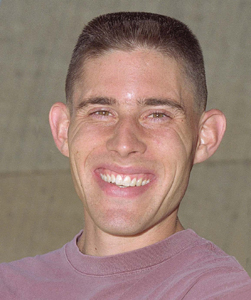
A major step towards “transparent” particle physics has come from a new scheme that opens up data collected by the D0 experiment at Fermilab’s Tevatron proton-antiproton collider.
When physicists started to study the behaviour of the atomic nucleus 90 years ago, they carefully watched scintillating screens for the tiny flashes produced as alpha particles were scattered by nuclear targets. The scintillating screen was the detecting medium and the experimenters’ own eyes provided the “read-out”.
Later came track chambers, such as cloud and bubble chambers. These were of immense appeal because physicists could directly see what happened in particle interactions. However, these instruments have been relegated to science museums, and today’s research relies instead on fast electronics. When today’s high-energy particle beams are made to collide, the big detectors surrounding the collision point are the physicists’ “eyes”.
One of the big challenges facing a newborn baby is to make sense of all of the jumbled visual signals that it sees and to learn to recognize and interpret patterns – people, objects and their surroundings. In the same way, the physicists operating a large electronic detector have to convert the raw impulses received by the various detector components and be able to say, for example, that a certain bunch of signals represents a 50 GeV pion travelling in a certain direction. Tracking is still there but the tracks are the results of computers analysing the impulses recorded in successive layers of the detector rather than direct “snapshots”.
Analysing the results of an experiment thus has to be carried out by physicists who “know” the detector. Another physicist who is not intimately acquainted with the detector but who has a hypothesis and wants to test this against actual data has to ask physicists from the experiment for help.

In the new development – called Quaero from the Latin for “I search” – the interpretation of certain datasets collected by the Fermilab D0 experiment from 1992 to 1996 has already been done and is openly available to other physicists to use as a testbed for models and theories. The data are classified according to the type of particles produced and include several of the datasets that led to the discovery of the top quark at Fermilab in 1995. This opening up of carefully collected data has become standard practice in astronomy.
Chicago physicist Bruce Knuteson, who masterminded Quaero, is currently at CERN to see if similar procedures can be established for the data archives of the four big experiments at CERN’s LEP electron-positron collider, which closed last year. He is optimistic. Electrons and positrons are pointlike, so electron_positron collisions are “cleaner” and less complicated than the proton-antiproton interactions studied at the Tevatron. Protons and antiprotons are in fact bunches of quarks and gluons, each of which can have its own collision products.
In the past, testing a model against actual data could take at least a few years. Quaero can do this in an hour. Until now there was no way of publishing a complete dataset of a high-energy physics experiment. Published plots show data in just two dimensions, making it difficult for another physicist to take the data as presented in a publication and translate them into some other context. The Quaero paper has been accepted for publication in Phsical Review Letters.
If Quaero is extended to LEP data, then anyone who wants will be able to sift for Higgs particles or other physics.







